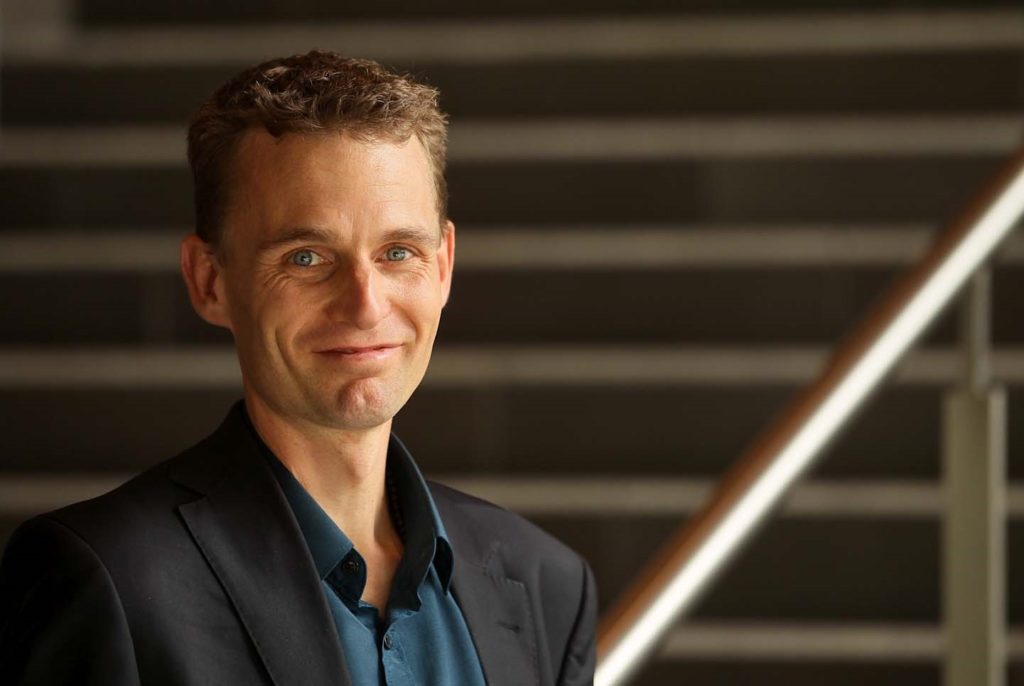Related Articles
The Big, Big Interview – Rasmus Hougaard
Rasmus is Managing Director of the Potential Project and a leading expert in mindfulness and, in particular, how it relates to leadership and managing people. His talk is entitled ‘How to lead yourself, your people and your organisation for extraordinary results’.
With the first IMI Membership Launch Day taking place on the 30th January, 2018, we sat down with the keynote speaker, Rasmus Hougaard, who will be the centerpiece of a morning of thought leadership, networking and stimulating debate.
Rasmus is Managing Director of the Potential Project and a leading expert in mindfulness and, in particular, how it relates to leadership and managing people. His talk is entitled ‘How to lead yourself, your people and your organisation for extraordinary results’.

Hi Rasmus, to begin, can you give our readers an overview of your new book, The Mind of the Leader? Will the ideas behind it be forming the basis for your IMI talk?
Yes, the research we carried out for this book, and other projects, will be the basis of the IMI talk. The book itself is a result of having worked with leaders for about 10 years and coming to the realisation that while mindfulness is useful and important for a leader, it was not enough for a leader in the 21st Century.
We basically embarked on a two-year study where we engaged with some of the leading researchers around the world, interviewing around 250 C-suite executives from the world’s largest organisations and we assessed around 35,000 leaders. Based on that, we tried to deduct what are – from a mental point of view – what are the two or three key components in a leader that can create extraordinary results.
What we clearly found from this was three things.
First of all, focus or mindfulness. In this distraction heavy world if you don’t have focus you can’t work effectively, and we found a very clear correlation between the level people reach in an organisation and their level of focus. So, essentially, if people don’t go over a certain threshold in being able to focus, they won’t be able to go above a certain threshold in terms of rank in the organisation.
Second of all is selflessness. So, the ability to put yourself out of the picture, not to do business for your own sake but for the bigger purpose. It is the exact opposite of being egotistic, and we found a lot of good research that the more leaders are focussed on themselves the less they perform and the less they raise in ranks. Even in politics, there is good research that politicians using words like ‘I’, ‘Me’ etc. are less successful that use words like ‘We’, ‘Us’.
Thirdly was compassion, which we define as the intention to be of benefit to others. So, if you imagine a leader that is compassionate towards their people, those people are going to be way more committed, have higher levels of trust, which in turn leads to higher performance, higher organisational performance and a better ethical frame in which to work.
And to give context, what is the work the Potential Project does?
We’re a global training and consultancy organisation based in 28 countries, mainly working with multi-nationals like Microsoft, Google and Accenture and McKinsey and so on, across the globe. What we’ve provided for the last 10 years is mainly leadership training, helping leaders to become more focussed, more present, more effective, and more resilient.
We look at the leader from a mental perspective and in today’s world, where we are constantly ‘on’ with information overload and we get very distracted. Basically, our brains become very fragmented and research has found that 47% of the time we’re not able to pay attention to the things we’re supposed to be paying attention to.
You talked about the three components of a leader – are any of those components competing against each other?
No, we don’t believe so. What we have learned from this research is that they almost come together, and in three steps. The more mindful you become the more you are aware of your unconscious bias, and the research with the C-suite executives found that the more self-awareness they were makes them more selfless, and the more selfless they are the more they begin to focus on the person in front of them.
So, mindfulness leads to selflessness, which leads to compassion so there is a fairly a virtuous circle amongst those three.
Are these innate qualities or can people learn and develop them?
They can definitely learn and develop them. There is no doubt that some people have more of the qualities innate in them, but they can be developed.
I grew up with the famous Maslow’s Hierarchy of Needs – is the theory outlined in the book structured similarly? In other words, does a leader need to have all the elements in a single package, or can they achieve results without developing one aspect or another?
That’s a good question. Let me set the context first of the environment a leader works within and come back to that…
Sure…
The most forward-thinking organisations – let’s say examples like Starbucks, Accenture, LinkedIn, Microsoft – have realised over the last few years of managing people through performance rating in top-down, hierarchical systems, is not working anymore.
It worked brilliantly in the past, since the industrial revolution, but today (especially with the numbers of millennials in the workplace – they make up around 70% of the entire global workforce nowadays) workers don’t want the same thing. Millennials don’t just accept a high wage and a bonus, they want meaning, they want effectiveness, they want purpose.
So, if you just rely on your power and your leverage than you’ll never be successful with your people and you’ll never be able to create a culture that is high performing in itself.
To come back to your question, without mindfulness, without selflessness, without compassion, you will never put your people centre, you’re going to put yourself centre, or at best the bottom-line centre. This will be short-sighted, it’s not going to encourage your people, thereby not create a good culture, and thereby in the long-term not have good financial returns for the organisation.
So, I would say any senior leader has to have a fair amount of each of the three elements to be a long-term success.
Let’s get down to the mindfulness in work – why should a CEO care? What are the concrete benefits to have engaged, happy employees? Can you prove this with statistics?
(Laughs) Yes, there are a lot of statistics out there. We have done quite a lot of research in the return on investment for these culture change programmes.
So, why should a CEO care? I’ll give you an example. One of the CEOs of the largest accounting firms in the US, Chris Smith (Moss Adams), realised around three years ago that he was very distracted, and he also found that people in his organisation had a high level of distraction. He decided that the company needed to become more mindful and he embarked on a journey basically taking a good part of the organisation through mindfulness programmes.
The impact on, for example, the client satisfaction was fantastic. If you can imagine an accountant that is distracted while you work together – looking at their phone etc. – and not being ‘there’ with you, is not very satisfying. Through the mindfulness programmes, the client facing accountants became much more engaged with the customers, increasing satisfaction levels.
We see this across the global scale, most obviously with Accenture, who see that these mindfulness programmes get significant results for their clients once introduced.
A part of your research and work in the Potential Project is based on the amount of attention an employee actually gives their tasks throughout the day – you talked a few moments ago about the 47% distraction rate – isn’t that simply a natural part of the cycle where the brain is resting?
From the neurological point of view it is called the default network, or the ‘wandering mind’. Research has shown where you go into that ‘wandering mind’, we are unhappier and unhealthier, so it’s not good from a purely physiological point of you.
And then obviously we are losing the time for performance, whether two seconds or two minutes. So, do we need to go into that default mode? Research has actually shown that we don’t. We can be present, if not 24/7, for many hours on the stretch.
This is particularly true with the right kind of attention, the right kind of presence, which is a relaxed presence. When people think about focus/attention they immediately think of a hyper-focus, where through mindfulness training you can teach your mind to learn to have a relaxed focus you can maintain for many, many hours.
In short, you don’t need to take those short breaks. They’re pleasant, but not needed.
For the average desktop worker out there reading this now, would you have one tip you’d share they could practice to increase their attentiveness?
The first one would be to eradicate multi-tasking.
I know, it sounds too radical! Okay, try to diminish it at least, because multi-tasking is killing our attention and focus.
Third one, for most people, is to switch off all alarms, notifications etc. on their computer in general.
For the HR professional wanting to introduce a mindfulness plan into their organisation that would really get results, could you give a quick example of a programme you’ve implemented that has worked really well, or maybe just the philosophy behind it?
Since we’re in Ireland, let’s take one from here. One company we have worked with a lot is LeasePlan in Ireland and we’ve trained most of the organisation…
…And what does that training actually look like?
We did five sessions. So employees – of groups of about 30 people – come into the room for five weeks for one hour each of those weeks. We’d go through a few fundamental things with them; first of all, the actual mindfulness training, getting into the habit of practicing for 10 minutes a day.
Secondly, how to apply that to emails, meetings, setting goals, keeping on your priorities, etc. – in essence how to apply mindfulness techniques to workplace activities.
The final thing we did with the LeasePlan people was to basically re-wire the brain from a neurological point of you to avoid it going back to that default stetting where the person zones out and is unproductive.
So basically, that was just 5 hours for each individual over 5 weeks, but we manage to cover a lot and really get them the tools to apply it to their day-to-day working lives.
Rasmus, thank you very much for your time – I look forward to seeing the talk.
Thank you, very much looking forward to it myself.
The IMI Membership Launch Day is invite-only for IMI Members. If you are interested in becoming a member, please contact the IMI Membership Team.





